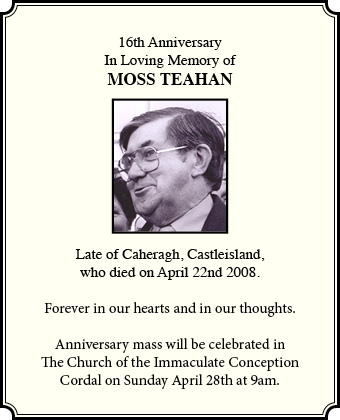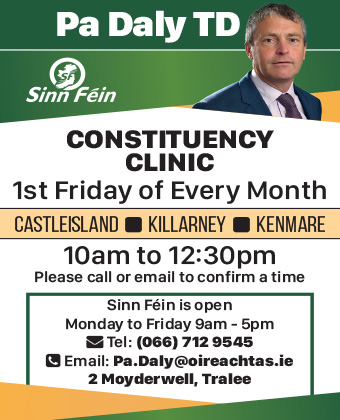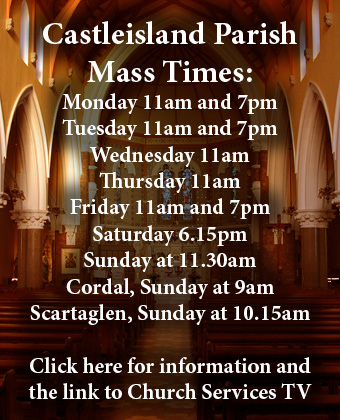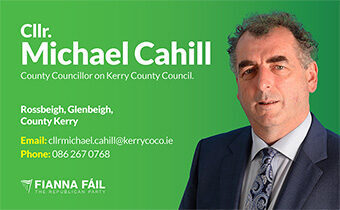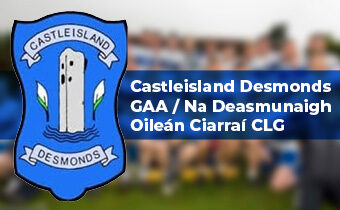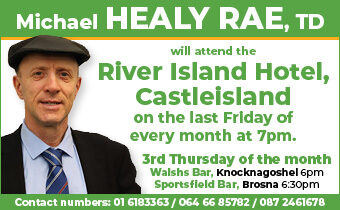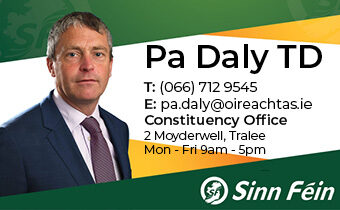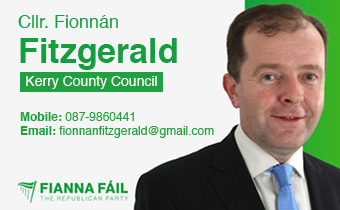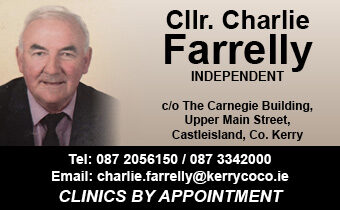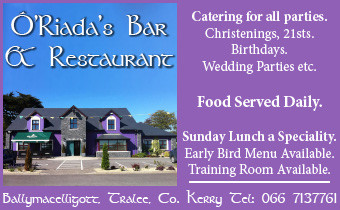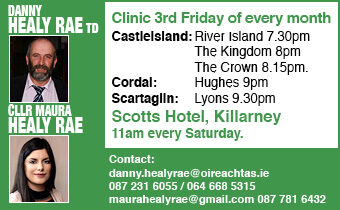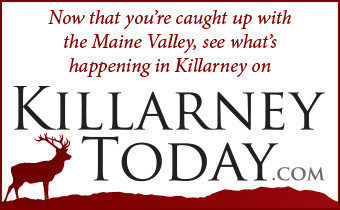

A century and a handful of months after the assassination of his great-grandfather on Church Street, Castleisland on an early May Sunday morning in 1921, a professor of history at Millsaps College, Jackson, Mississippi, William K Storey has fulfilled an ambition, ignored parental advice and is here on a visit to Castleisland.
Mr. Storey has also walked the street and stood on the spot where the man, whose christian and surnames he inherited, died instantly after an IRA attack as he left Mass at the nearby parish church on that fateful morning.
In May of this year, Mr. Storey recalled what he had learned about the shootings of the men whose names are forever linked in the annals of local history as ‘Storey and Butler’ and the times they lived in.
His recollections were published in the Irish Independent on Saturday, May 29th 2021 and you can read them here as follows:
‘My Great-grandfather’s Shooting Traumatised the Family for Decades’
William K Storey
A hundred years ago, my great-grandfather was assassinated by the IRA.
On the morning of Sunday, May 8, 1921, Head Constable William K Storey was attending Mass with his wife, Mary, with his assistant, Sgt. Butler, and his wife in Castleisland, Co Kerry. As they left with the congregation and walked out on to the street, they were followed by four IRA men, who pulled out revolvers and shot the officers from behind.
Killed Instantly
One bullet struck Storey in the back of the head, killing him instantly. Butler was wounded and would have been killed with a follow-up shot, but his wife threw herself over his body and dared the assassins to shoot her too. The IRA men walked away. Butler died of his wounds two months later.
My great-grandfather’s burial certificate says that he died of natural causes. Was the undertaker who recorded this indicating that it was natural for the IRA to kill a member of the Royal Irish Constabulary?
Or was he just scared, mindful of the boycott that the IRA placed on people who associated with traitors?
Targeted by the IRA
Hundreds of police officers were targeted by the IRA to make Ireland ungovernable. The British response was to send soldiers and armed bands of veterans and misfits called the Black and Tans. They carried out their own attacks, including reprisals for my great-grandfather’s killing.
The history is familiar, but there remain silences about the people whose loyalties were somewhere between the tricolour and the union flag.
Family Fled Castleisland
The Storey family fled Castleisland, first for Cork, then for Chatham, Kent, and next for Queens, New York. My great-grandmother and her children settled in a neighbourhood called Corona, which was mainly Italian.
“At least they were Catholic,” I was told by my grandmother. Maybe that was just a joke, but maybe the Irish neighbourhoods were to be avoided. These were the days when a bartender might ask a patron to make a donation for “the boys”. The association with the RIC carried a lasting stigma.
‘Never Visit Castleisland’
In 1976, the IRA made their final threatening phone call, on the day of my grandfather’s funeral. I was ten years old.
My father advised me never to visit Castleisland. The things that happened there had left his family traumatised.
The killing of my great-grandfather raises many questions. Did he make himself a target by doing something wrong? It is possible.
Personal Biases Aside
As a historian, I am trained to set aside personal biases and to use evidence to get as close as possible to the truth. It is hard to find evidence, even though the killing was fairly high-profile. It was mentioned in the British parliament, but until recently the public record amounted to little more than a few newspaper stories.
A few years ago, new documents were released. The IRA man who killed my great-grandfather told his story to the Irish authorities, as part of his application for a pension.
Bureau of Military History
His testimony is published online, as part of the Bureau of Military History papers. The testimony answers the “how” question but not the “why”. The British documents were subject to a 100-year gag rule. Soon they may provide a few more clues.
But the thing I’d really like to do is to go to Castleisland and ask around.
I know that oral traditions have their limitations as evidence. I know from elderly relatives that the IRA told my great-grandfather that if he did not quit his job working for the British, they would kill him. He told them off. He had a family to feed. Besides, he only had a few years before he could collect a pension.
Proud to be a Policeman
Family tradition says that he was proud to be a policeman. Family tradition says that his sympathies were with the nationalists. Family tradition says that when my great-grandmother deposited the monthly British pension check, she cursed the Black and Tans.
This could all be confirmed or contradicted. In any case, 100 years later I’m moving past the silences.
There are a lot of questions to run down, the main one being: if things were so violent and polarised then, how are people getting along now? In the decades before the First World War, identities and loyalties that attached to class, religion and parties were diverse.
Struggle for Independence
During the struggle for independence, the intimidation, violence and vengefulness tended to polarise people. That was the intent of the militant loyalists and patriots: to make it impossible for anyone not to choose sides. How did people recover from such a deadly way of thinking?
This spring I was hoping to leave the polarised USA and to visit Ireland. I hope to learn about the killings and about how things got better.
Covid-19 restrictions prevented travel, but extra time online delivered a windfall.
Electronic Forum
I introduced myself to an electronic forum dedicated to the RIC and a few weeks later I was contacted by Donal O’Donovan. He is the great-grandson of WH O’Connor, a Castleisland republican whose home and business were destroyed in reprisal for the killing. O’Connor’s family connected with the Storey family in other ways, too, highlighting the intimacy as well as the brutality of the conflict in a small rural town.
William K Storey is professor of history at Millsaps College, Jackson, Mississippi.
 You can contact The Maine Valley Post on…Anyone in The Maine Valley Post catchment area who would like to send us news and captioned photographs for inclusion can send them to: jreidy@mainevalleypost.com Queries about advertising and any other matters regarding The Maine Valley Post can also be sent to that address or just ring: 087 23 59 467.
You can contact The Maine Valley Post on…Anyone in The Maine Valley Post catchment area who would like to send us news and captioned photographs for inclusion can send them to: jreidy@mainevalleypost.com Queries about advertising and any other matters regarding The Maine Valley Post can also be sent to that address or just ring: 087 23 59 467.




